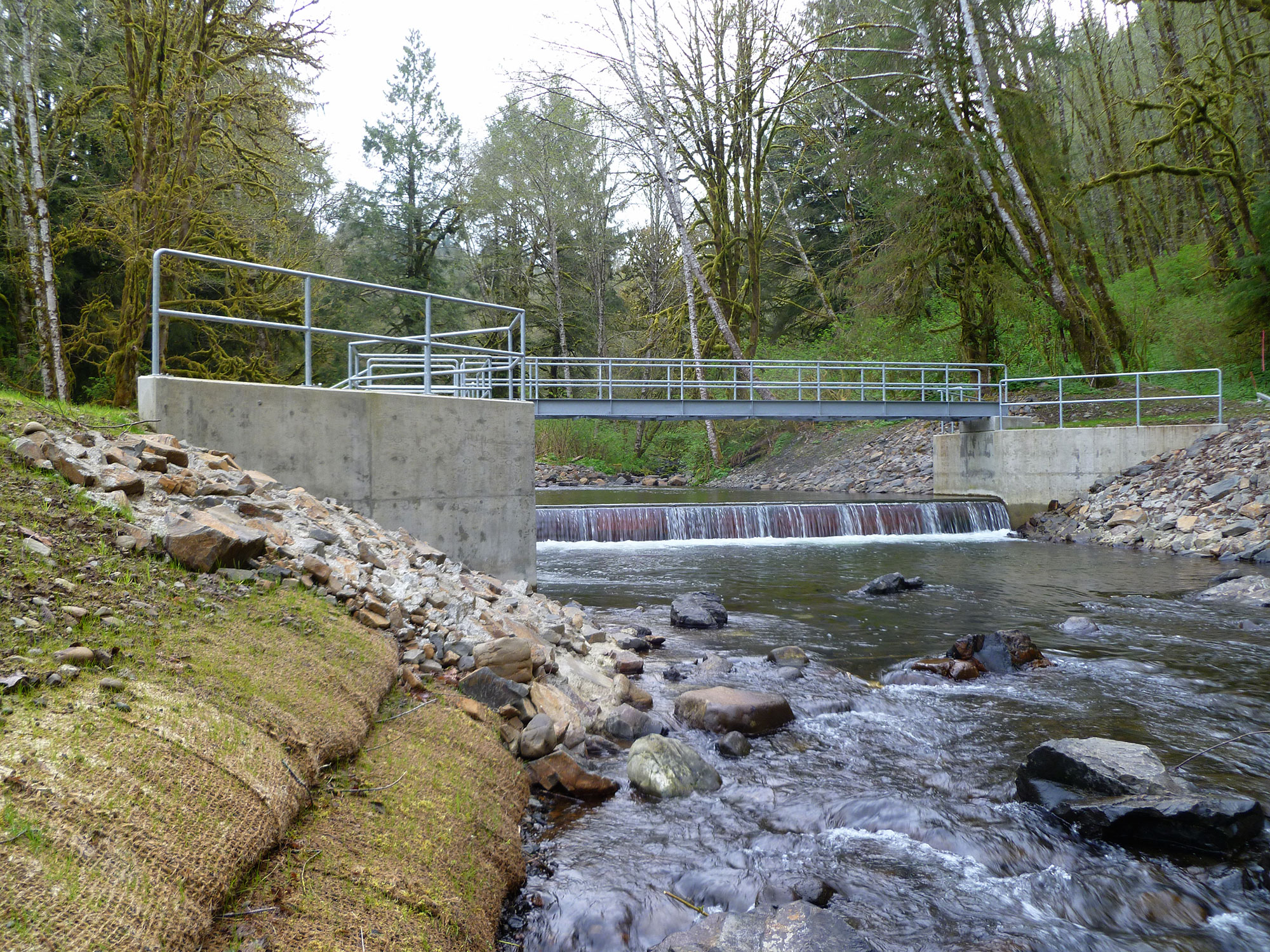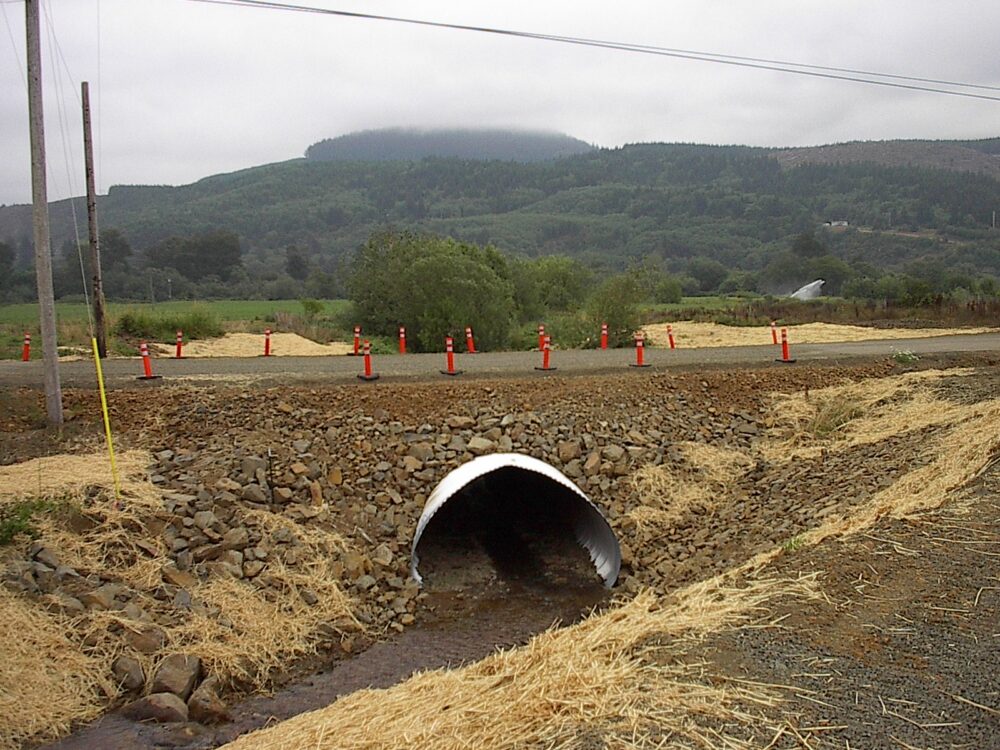Progress

- Pre-assessment (Completed)
- Project Design (Completed)
- Project Started (Completed)
- Project Finished (Completed)
- Monitoring Active (In Progress)
Water for people and a ladder for fish
What happens when the infrastructure of a reliable, established source of clean municipal drinking water threatens fish passage and stream function? An innovative design offers a solution in which everyone benefits, as is the case of the recently completed Tillamook River’s Fawcett Creek’s fish ladder and water diversion project. Collaboration between state and local governments, the Tillamook Estuaries Partnership (TEP), and stewardship for clean drinking water and good fish habitat made this project a success.
Two miles upstream from Fawcett Creek’s confluence, the City of Tillamook operated an antiquated surface water diversion as a primary source for water supply. However, the diversion dam blocked fish passage to important habitats and the lack of a screened diversion led fish to become trapped in the settling pond. Additionally, the stream channel was modified and lined with concrete walls which constrained the stream and increased flooding and damage to structures and the pond.
Fawcett Creek supports six miles of habitats for threatened Oregon Coast coho salmon, and populations of chinook salmon, chum salmon, steelhead trout, resident and sea-run cutthroat trout, and lamprey. The diversion dam’s three foot jump blocked adult and juvenile salmon passage, limiting their access to three of the six miles. Fish need high quality spawning and rearing areas and reduced availability of these can hinder fish production.
The City was eager to fix all that. They did not want to abandon the diversion but they also wanted to be good stewards of the creek’s salmon populations. To assist, they brought in the Tillamook Bay Watershed Council, who led the effort up to construction and TEP carried it to completion. Working with engineer GHD, Oregon Department of Fish and Wildlife (ODFW), US Fish and Wildlife Service, and the Oregon Watershed Enhancement Board, the City came up with a design that ensured safe passage for fish and maintained the creek as a key drinking water source for the City’s residents.
During summer 2012, Five Rivers Construction of Longview replaced the water diversion system with a full-spanning concrete structure and a 24-foot long fish ladder. The diversion structure is specifically designed to widen the stream channel to alleviate flooding problems and the ladder allows adult and juvenile salmon passage. A new screen intake just upstream ensures sufficient water is supplied to the upgraded settling pond, and that no fish pass through.
The Council raised $630,000 in grants to fund design, engineering, and construction for the fish screens and ladder, and the City kicked in $74,000 in cash and donated services. Design and engineering began in 2010 and construction on site took five months. The project was completed in October 2012.
Michelle Long of ODFW adds, “The success of the project was evident after the first fall rain, when chinook were seen holding in the pool above the ladder, waiting for more rains to continue moving upstream.”
The project complements other restoration work implemented on Fawcett Creek, such as the bridge Tillamook County constructed in 2009 and extensive riparian (streamside) plantings undertaken by TEP’s voluntary Backyard Planting Program.
Thanks to the City’s stewardship and a helping hand from partners, Fawcett Creek once again provides habitat to local fish throughout its reach. Every bit helps to rebound our local fisheries.
Project Details



